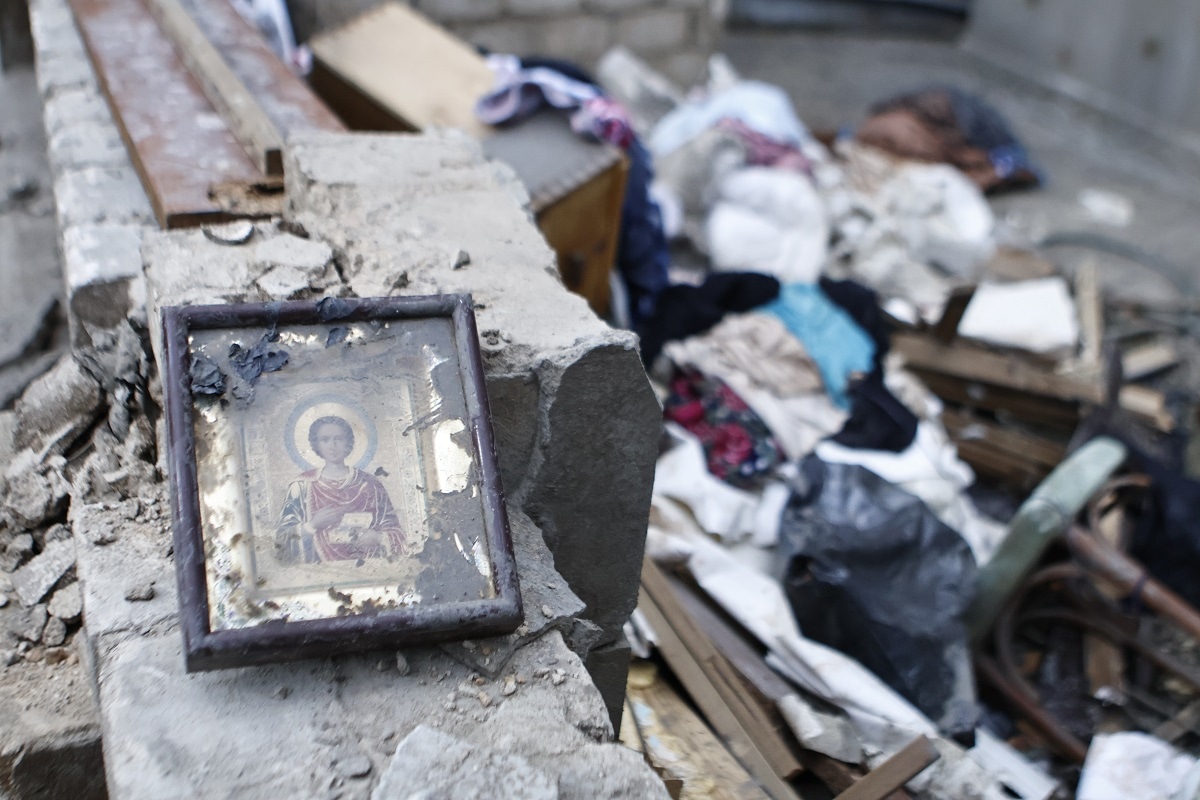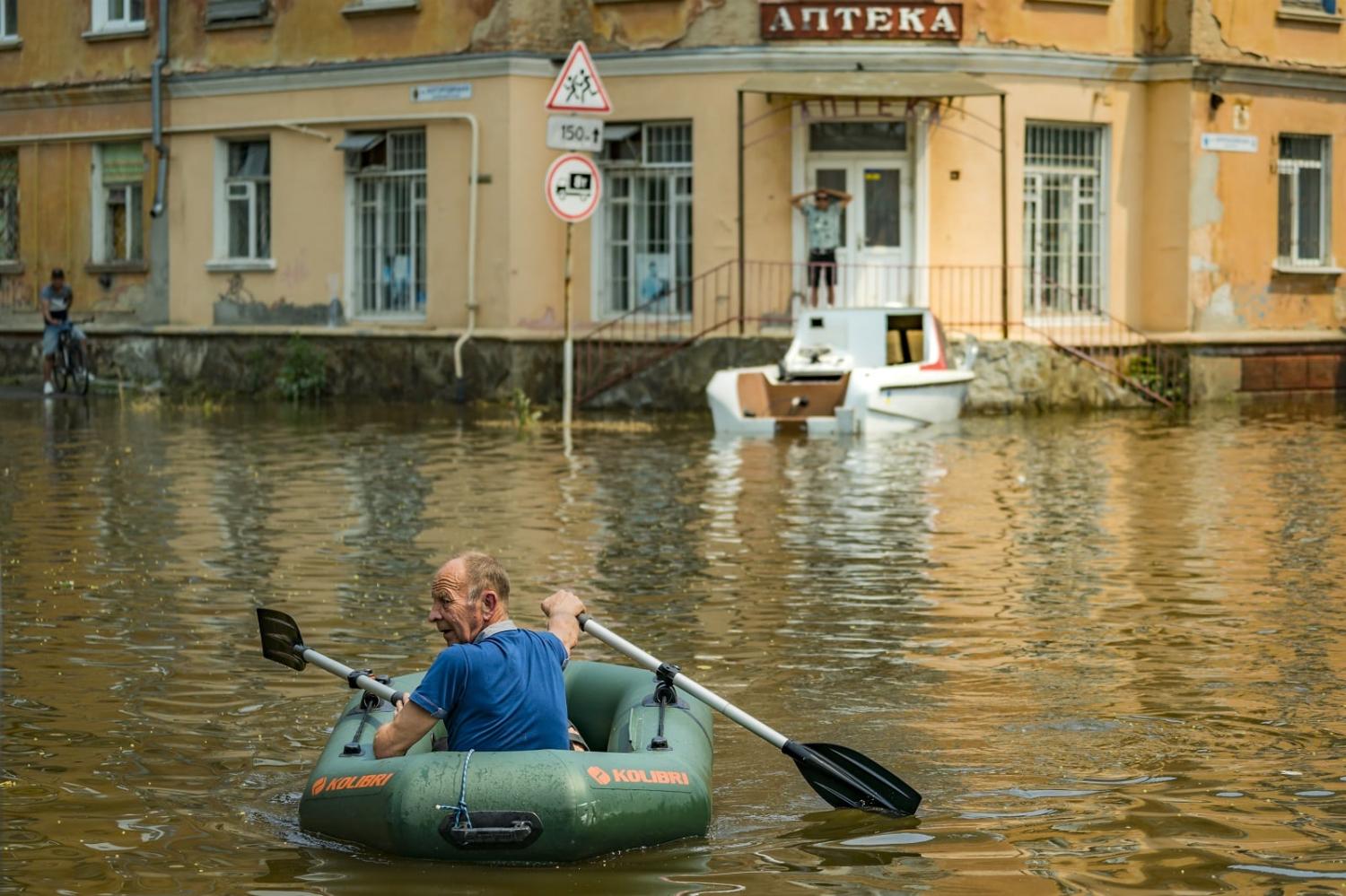The partial destruction of the Nova Kakhovka Dam in southern Ukraine’s Kherson region on 6 June represents another blow to global food security.
Located on the transboundary Dnieper River, which runs from Ukraine’s northern border with Belarus down to the Black Sea, the dam provided water to the Kakhovka hydroelectric power plant and is crucial for power generation, irrigation and drinking water. While Ukraine currently controls five of the six dams along the Dnieper River, the Kakhovka dam – the furthest downstream in the Kherson region – has been under Russian control since President Vladimir Putin launched his invasion of Ukraine in February 2022.
With the nearby Kakhovka Reservoir, which at the time held 18 cubic kilometres of water, at the centre of an extensive network of irrigation canals (such as the North Crimean and Kakhovsky canals), the collapse of the dam triggered extensive flooding downstream, causing tens of thousands to evacuate.
The impacts on Ukraine’s environment, population and economy should not be underestimated. The dam’s destruction has severely disrupted irrigation systems in southern Ukraine, leaving an estimated 600,000 hectares (1.44 million acres) of arable land without water. Kyiv announced in a statement that 94% of irrigation systems in the Kherson region, 74% in Zaporizhzhia, and 30% in Dnipropetrovsk have been left without a water source.
These significant blows to what is known as “the breadbasket of Europe” raise concerns about global food supplies and market volatility. Like Russia, Ukraine is a major agricultural power, playing a key role in the grain and edible oil markets – the backbone of global food security. Ukraine alone accounts for 40% of the global trade in sunflower meal, 35% of sunflower oil, and 5% of wheat, barley and corn exports.
Prior to the war, the affected regions in southern Ukraine harvested four million tonnes of grains and oilseeds annually, valued at US$1.5 billion. The Kherson region, despite comprising only 2% of Ukraine’s 33 million hectares of farmland, contributed more than 4% of the country’s gross agricultural production.

Aside from the European Union, the other main importing regions are Africa and Asia – two increasingly food-insecure regions. Between 2018 and 2020, Africa imported US$3.7 billion in wheat (32% of total African wheat imports) from Russia and US$1.4 billion from Ukraine (12% of total African wheat imports).
In a March 2022 report, the United Nations identified 36 countries reliant on Russia and Ukraine for more than 50% of their wheat imports, including some of the poorest and most vulnerable, such as Syria, Lebanon and Somalia.
News of the dam collapse caused a global increase in wheat and corn prices, with grain prices rising by an average of 3% on the international market. These price increases exacerbate concerns about food insecurity, which have been heightened by Moscow’s threat to withdraw from the Black Sea Grain Initiative.
The grain deal, brokered by the UN and Turkey in July 2022, aims to address the global food crisis resulting from the conflict by allowing Ukrainian agricultural products to be exported from three Ukrainian ports – Chornomorsk, Odesa, Pivdennyi/Yuzhnyi. In return, UN officials agreed to assist Russia with its food and fertiliser exports.
However, Putin recently pointed out that Europe is the biggest importer of Ukrainian grain, also criticising the West for not implementing measures to give Russian agricultural goods and fertiliser products access to global markets. He also stated that Russia was prepared to supply grain for free to the world’s poorest nations.
Meanwhile, a damaged ammonia pipeline in Russia’s Kharkiv region near the Ukraine-Russia border adds to concerns about food insecurity. While the pipeline – which carries the key ingredient in nitrate fertiliser – had been inactive since the start of the war, Russia considers it crucial for maintaining grain shipments through the Black Sea corridor. However, Ukraine argues that it was not part of the original Black Sea grain agreement, forcing Moscow to find alternative outlets for its ammonia exports.
In addition to the challenges Ukrainian farmers have faced since February 2022, the loss of agricultural land will cause further difficulties. Without the grain deal, exporting agricultural products becomes even more challenging. Ongoing tensions with neighbouring countries, such as Hungary, over cheap Ukrainian grain flooding the regional market, complicate matters as well. Reduced export volumes and increased costs would lead to lower prices and incomes for Ukrainian farmers, discouraging crop planting.
The situation puts pressure on other countries to meet the demand for grains, particularly those reliant on Ukrainian and Russian agricultural products. While good harvests in other major agricultural nations, including Russia, may result in relatively low import prices in the short term, other agricultural powerhouse nations will likely face challenges in meeting demand in the medium-to-long term.
In the United States – the world’s leading corn producer – only 64% of this season’s corn crop has been rated good-to-excellent due to a lack of rain. Meanwhile, China’s wheat crop has been impacted by heavy rain, leading to crop losses. Australia’s winter crop production is expected to decrease by 34% to 44.9 million tonnes in 2023–24.
Amid these challenges, countries reliant on Ukrainian and Russian agricultural products may experience increased competition with countries scrambling against each other to secure limited supplies. This will likely result in food price spikes.
For Ukraine and the many countries dependant on Ukrainian and Russian agricultural imports for food security, the hydroelectric dam’s collapse combined with the likelihood of Moscow withdrawing from the Black Sea Grain Initiative is a recipe for disaster.

